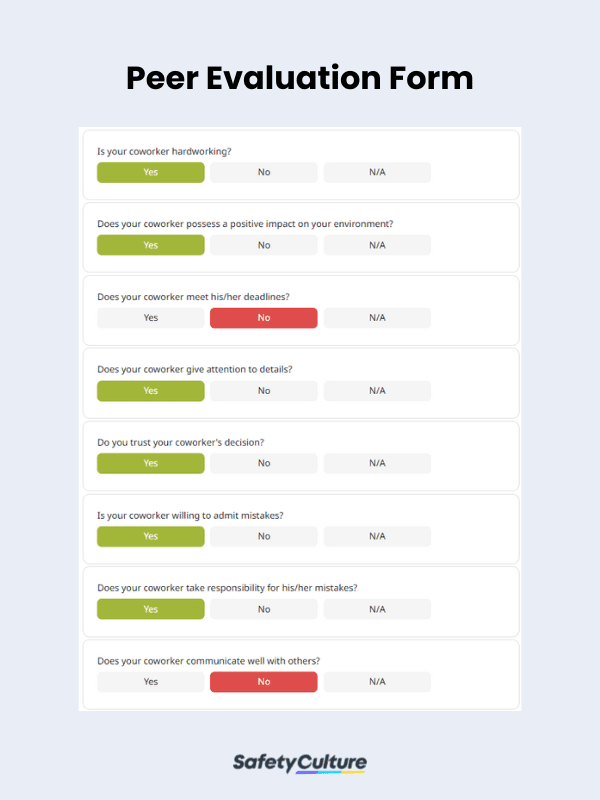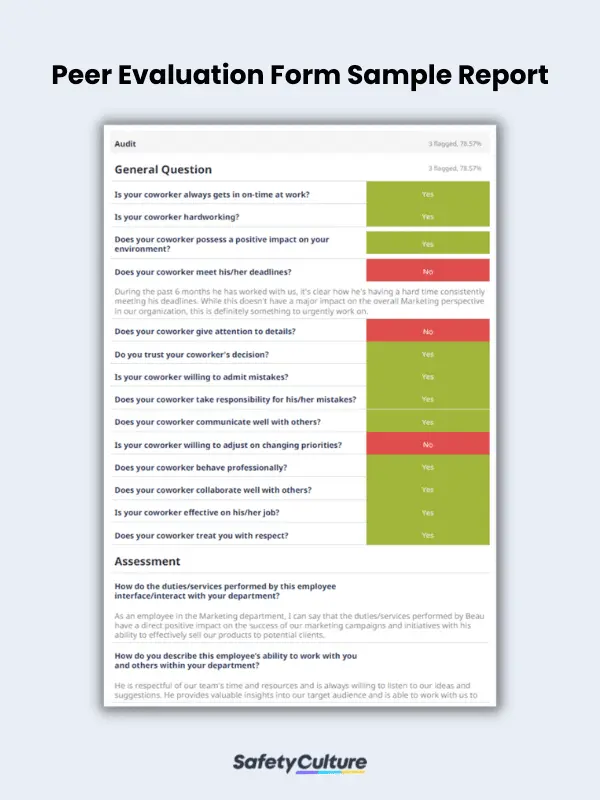What is a Peer Evaluation Form?
A peer evaluation form is a document that outlines the criteria and questions to be used in the peer evaluation process. Peer evaluation forms can vary in structure depending on the purpose of the evaluation, the criteria being assessed, and the format of the evaluation. Some forms may be general, asking for feedback on overall performance, while others may be more specific, focusing on particular skills or competencies.
Importance and Benefits of Using One
In any organization, the performance of employees is a critical factor in determining the success of the organization. Therefore, it’s crucial to evaluate the performance of employees on a regular basis to ensure they are meeting the expectations of the organization. Peer evaluation forms are an essential tool to help organizations achieve this objective. The following are just some of the benefits of using a peer evaluation form:
Objective evaluation
Peer evaluation forms ensure that employees are evaluated in a way that is objective. This is because peer evaluation forms are designed to capture objective information about an employee’s performance.
Improved employee performance
Peer evaluation forms can be a useful tool in improving the performance of employees by leveraging feedback gathered from peers. This helps identify areas where they need to work on and take steps to improve their performance.
Identified training needs
This form can help pinpoint the training needs of employees. Hence, this information can be used to develop training programs that are tailored to the needs of employees.
How to Create Effective Peer Evaluation Forms
To guide you, here are some tips you can follow when creating peer evaluation forms.
Identify the purpose of the evaluation.
Before creating a peer evaluation form, you must define the purpose of the evaluation. Is it being conducted to provide feedback for employee development or assess performance for promotion or salary review? Understanding the purpose of the evaluation will help in determining the appropriate criteria to be assessed.
Determine the evaluation criteria.
Once the purpose of the evaluation has been established, the next step is to determine the evaluation criteria. This may include specific skills, behaviors, or competencies relevant to the employee’s job position. With this, ensure the criteria are measurable and objective.
Create the form.
The form should include clear instructions on how to complete it, as well as the criteria to be assessed. The questions should be designed to elicit specific feedback rather than general or vague responses. Also, it must allow for open-ended comments and suggestions.
Ensure anonymity and confidentiality.
To ensure the integrity of the peer evaluation process, guarantee the anonymity and confidentiality of the feedback provided. This will help encourage honest and constructive feedback and prevent any bias or favoritism.
Allow the evaluator to provide suggestions for improvement.
This section will help the employee being evaluated to understand how they can improve their performance and provide a clear path for development. Also, the evaluator can be given a chance to expound on their thoughts and feedback on the employee.
What Should a Peer Evaluation Form Include?
Generally, a peer evaluation form must include the following elements and sections:
- Title Page – details about the employee being evaluated, the evaluator, and the date and time of the review
- General Questions – Yes-No-N/A questions about the employee’s performance
- Assessment – open-ended questions to assess the employee’s impact, contributions, and overall behavior
- Completion – digital signatures of the employee being evaluated and the supervisor
FAQs About Peer Evaluation Forms
The purpose of a peer evaluation is to gather and provide feedback on an employee’s performance, skills, and behavior in the workplace, as seen by their peers. This feedback can help them identify areas where they excel and areas where they can improve, which can ultimately lead to their professional development.
The frequency of peer evaluations may vary depending on an organization’s policies, performance management system, and the nature of the work being done. Some companies conduct peer evaluations annually, while others may do it more frequently, such as quarterly or bi-annually.
To ensure anonymity and confidentiality in a peer evaluation, organizations can use an online platform and secure forms that collect and analyze data anonymously. This can help protect the identity of the reviewers, allowing them to provide honest feedback without fear of conflicts and repercussions.




